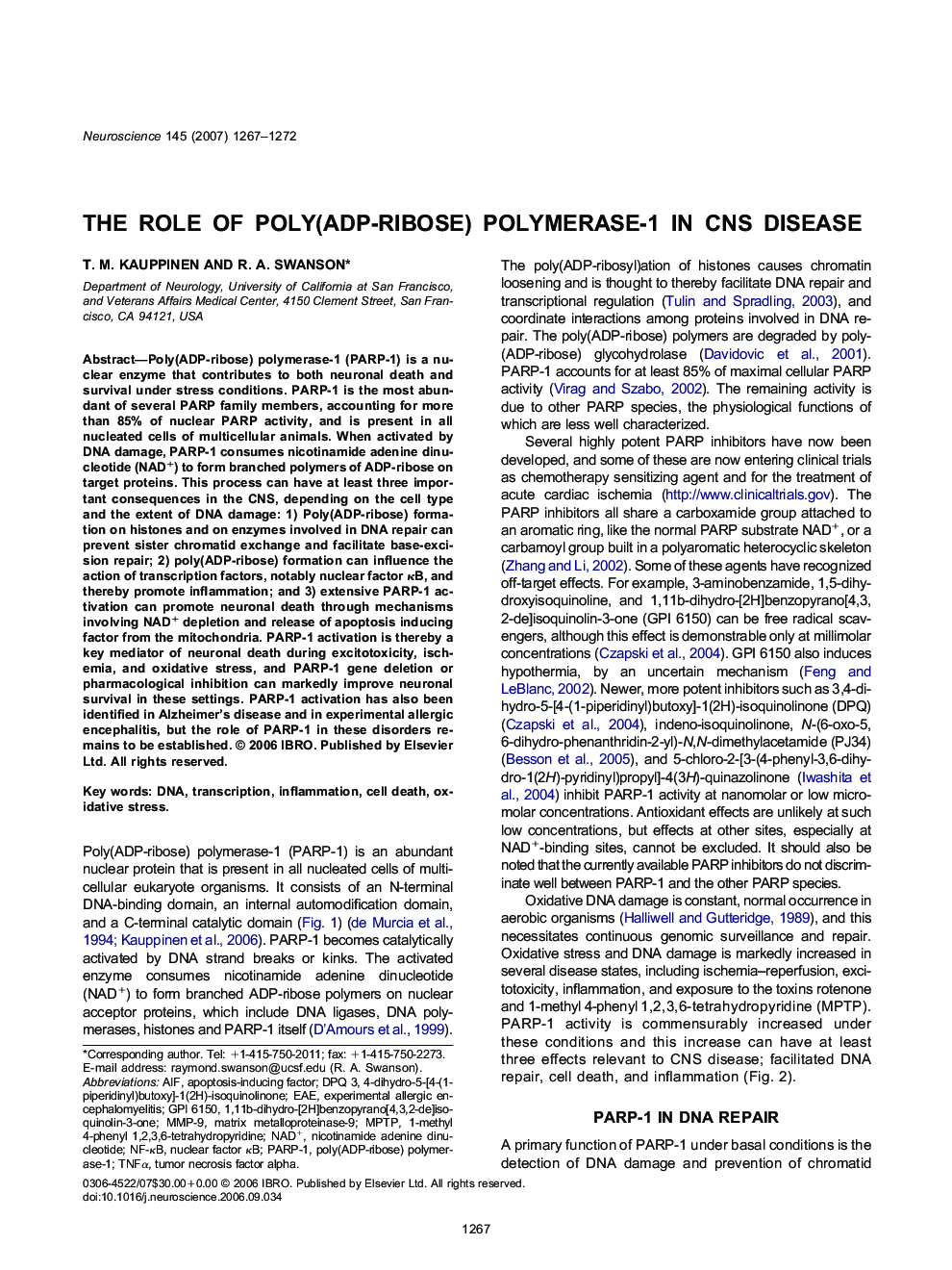| Article ID | Journal | Published Year | Pages | File Type |
|---|---|---|---|---|
| 6278458 | Neuroscience | 2007 | 6 Pages |
Abstract
Poly(ADP-ribose) polymerase-1 (PARP-1) is a nuclear enzyme that contributes to both neuronal death and survival under stress conditions. PARP-1 is the most abundant of several PARP family members, accounting for more than 85% of nuclear PARP activity, and is present in all nucleated cells of multicellular animals. When activated by DNA damage, PARP-1 consumes nicotinamide adenine dinucleotide (NAD+) to form branched polymers of ADP-ribose on target proteins. This process can have at least three important consequences in the CNS, depending on the cell type and the extent of DNA damage: 1) Poly(ADP-ribose) formation on histones and on enzymes involved in DNA repair can prevent sister chromatid exchange and facilitate base-excision repair; 2) poly(ADP-ribose) formation can influence the action of transcription factors, notably nuclear factor κB, and thereby promote inflammation; and 3) extensive PARP-1 activation can promote neuronal death through mechanisms involving NAD+ depletion and release of apoptosis inducing factor from the mitochondria. PARP-1 activation is thereby a key mediator of neuronal death during excitotoxicity, ischemia, and oxidative stress, and PARP-1 gene deletion or pharmacological inhibition can markedly improve neuronal survival in these settings. PARP-1 activation has also been identified in Alzheimer's disease and in experimental allergic encephalitis, but the role of PARP-1 in these disorders remains to be established.
Keywords
NF-κBMPTPTNFαEAEMMP-9PARP-11-methyl 4-phenyl 1,2,3,6-tetrahydropyridineDNANAD+experimental allergic encephalomyelitisAIFinflammationOxidative stresstumor necrosis factor alphaTranscriptionapoptosis-inducing factornuclear factor κBMatrix metalloproteinase-9Cell deathNAD, nicotinamide adenine dinucleotidePoly(ADP-ribose) polymerase-1
Related Topics
Life Sciences
Neuroscience
Neuroscience (General)
Authors
T.M. Kauppinen, R.A. Swanson,
